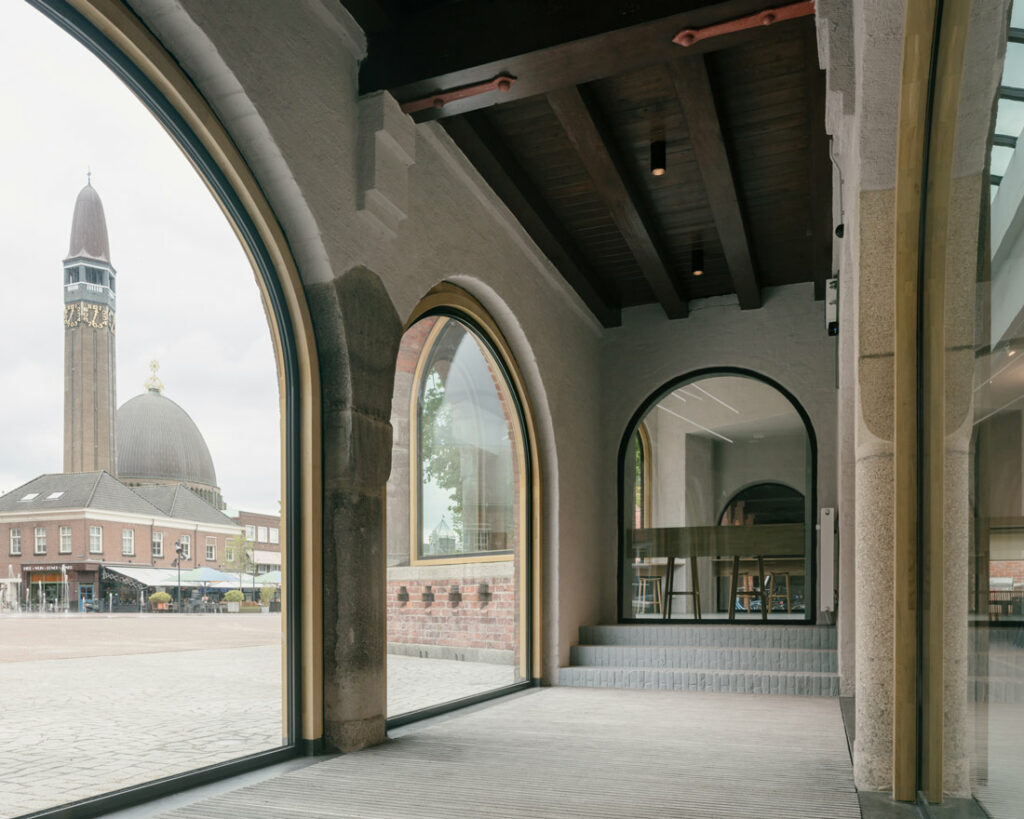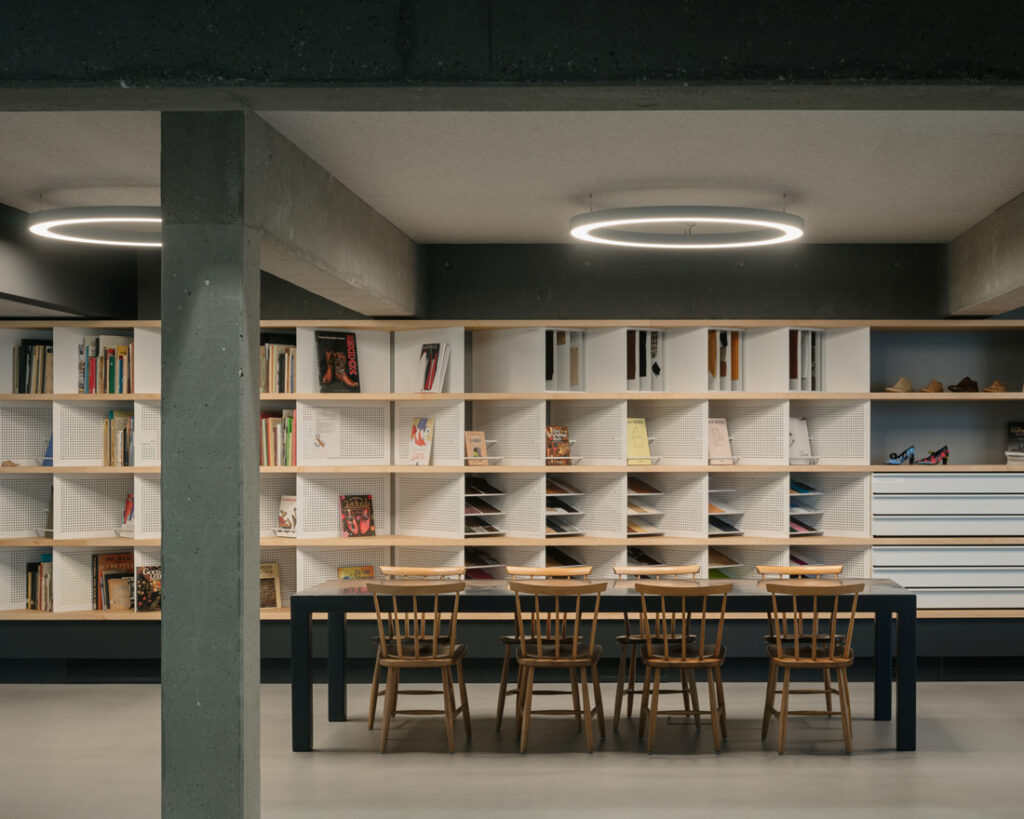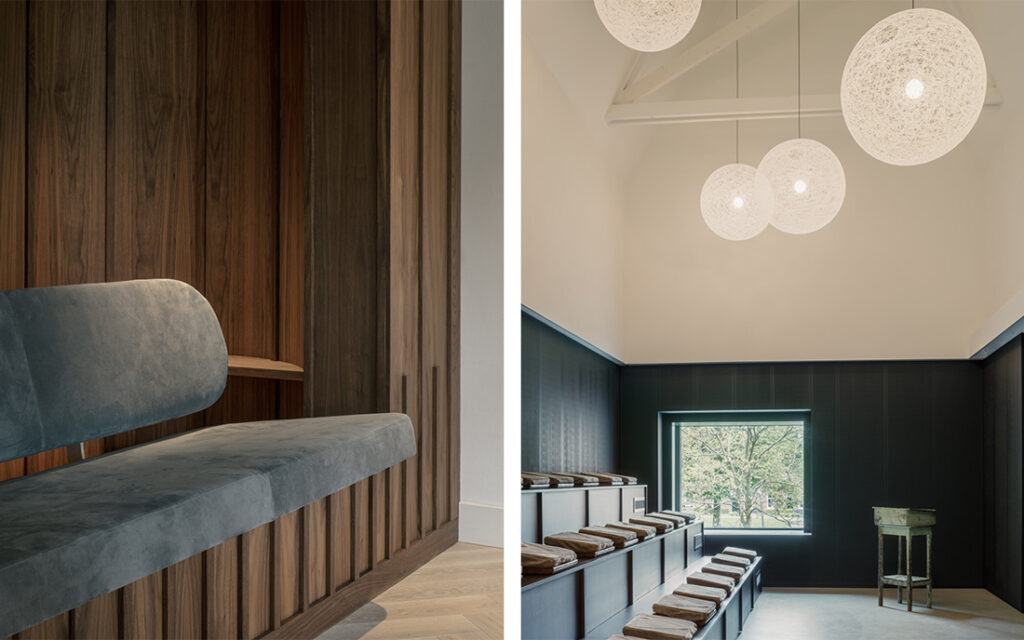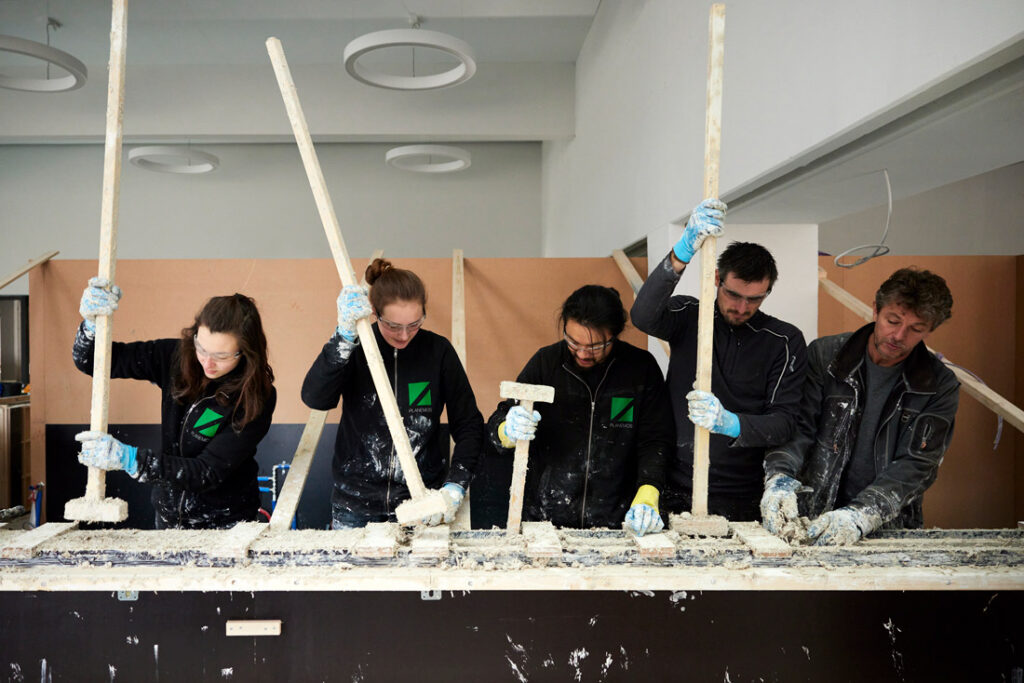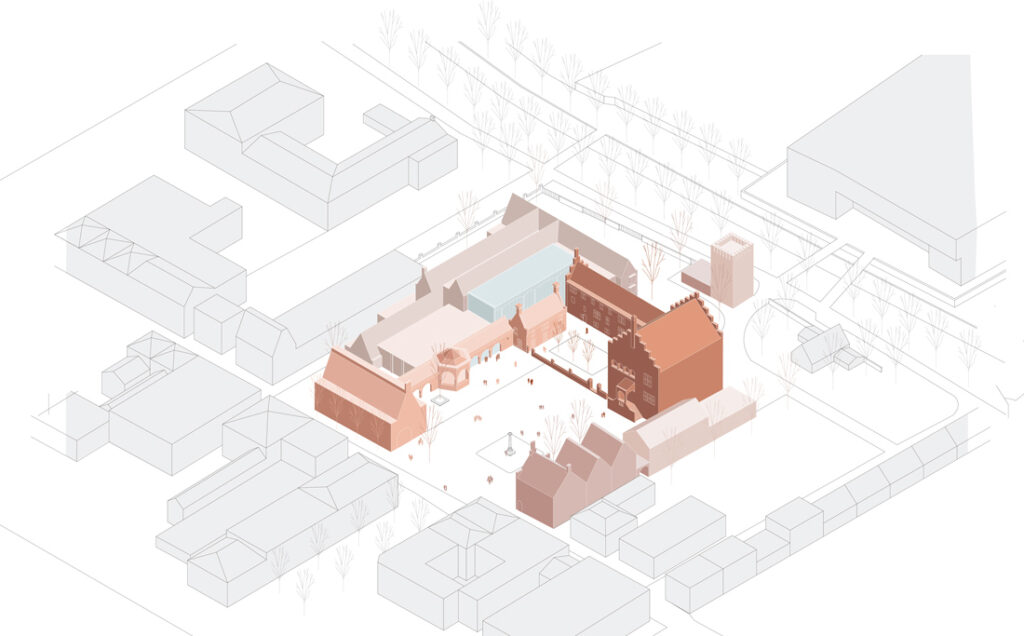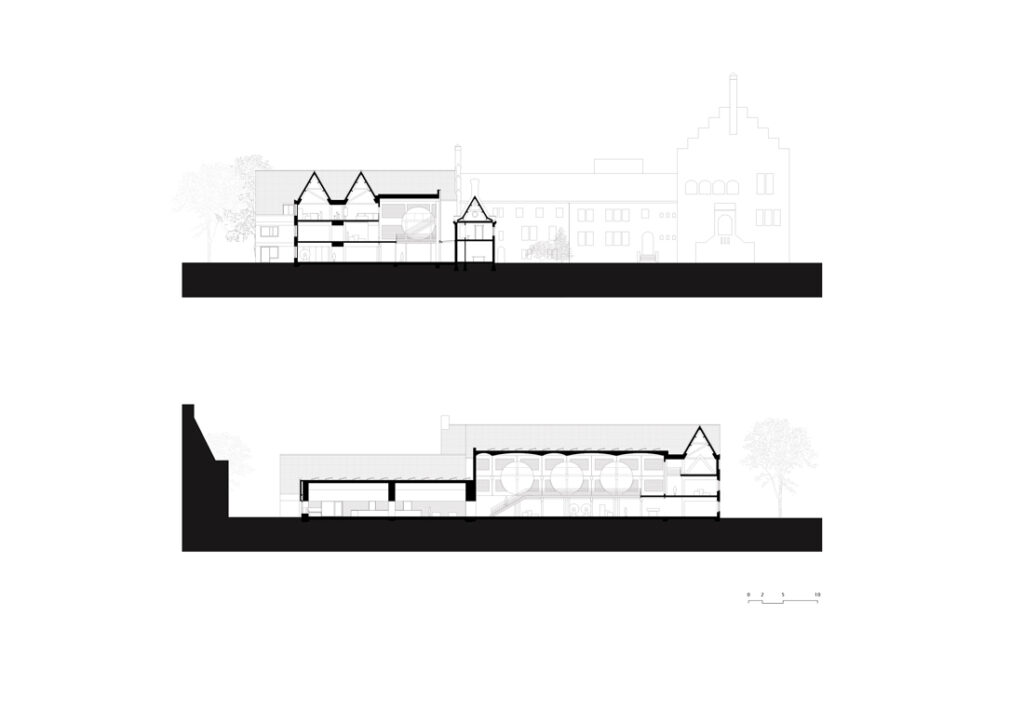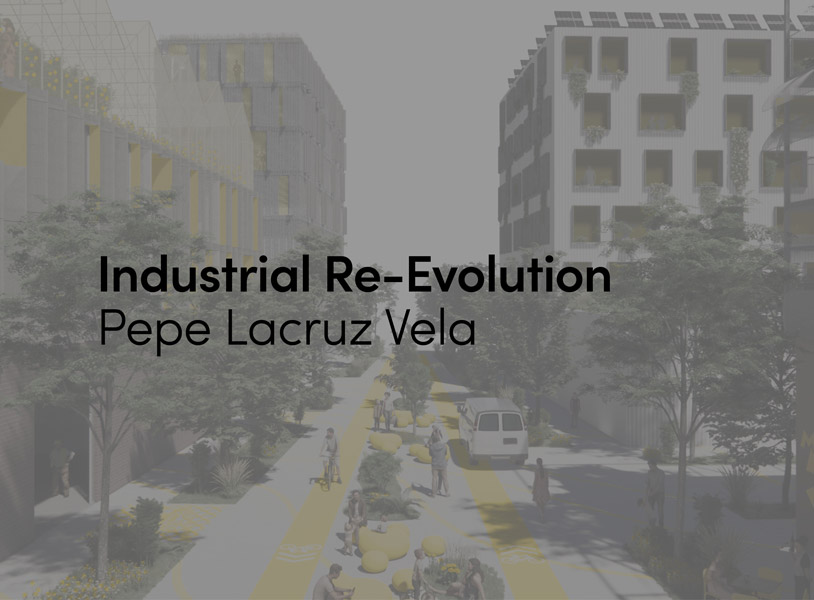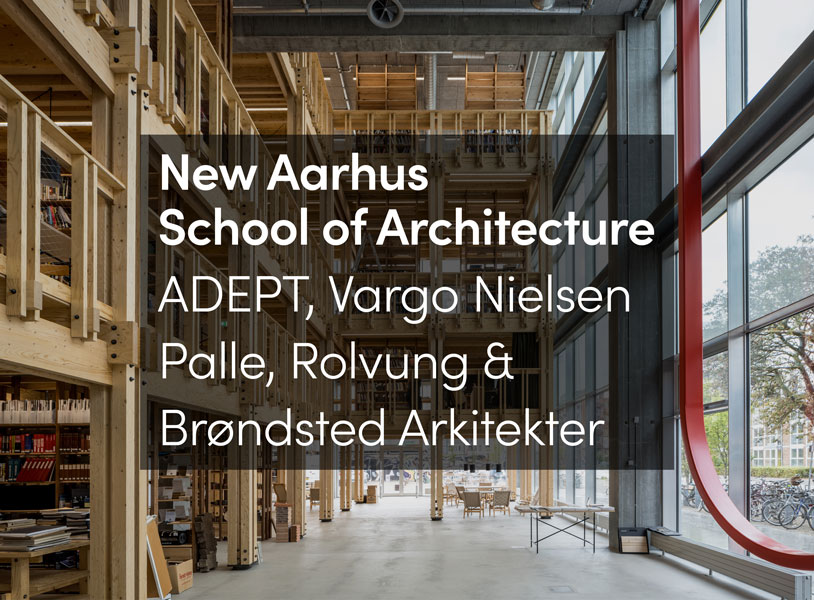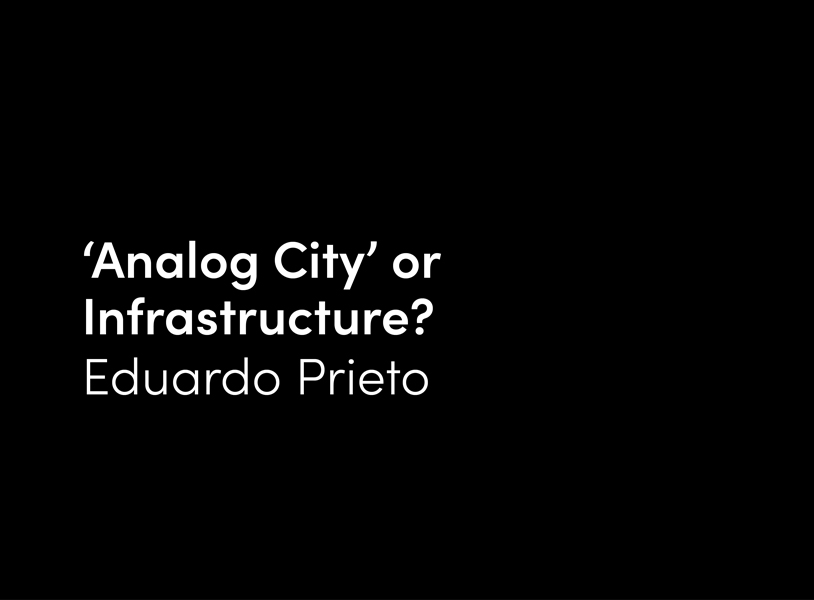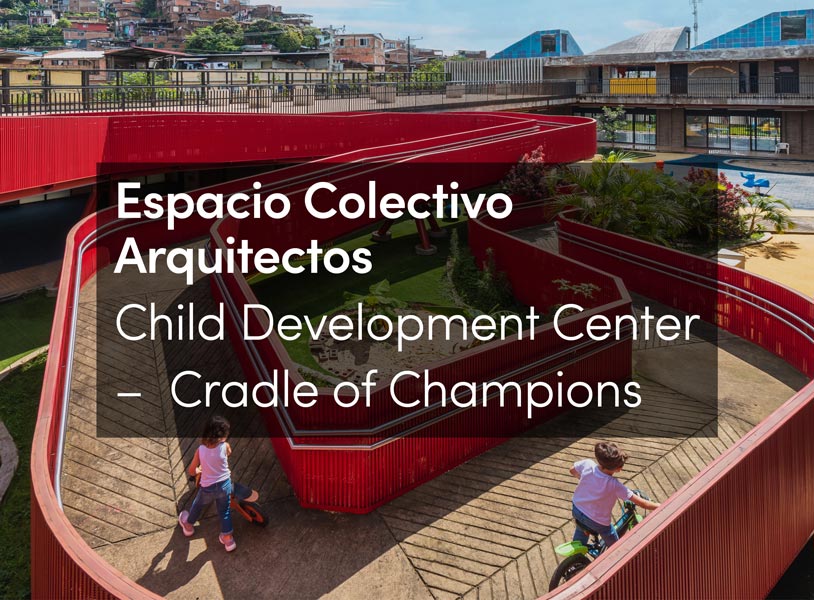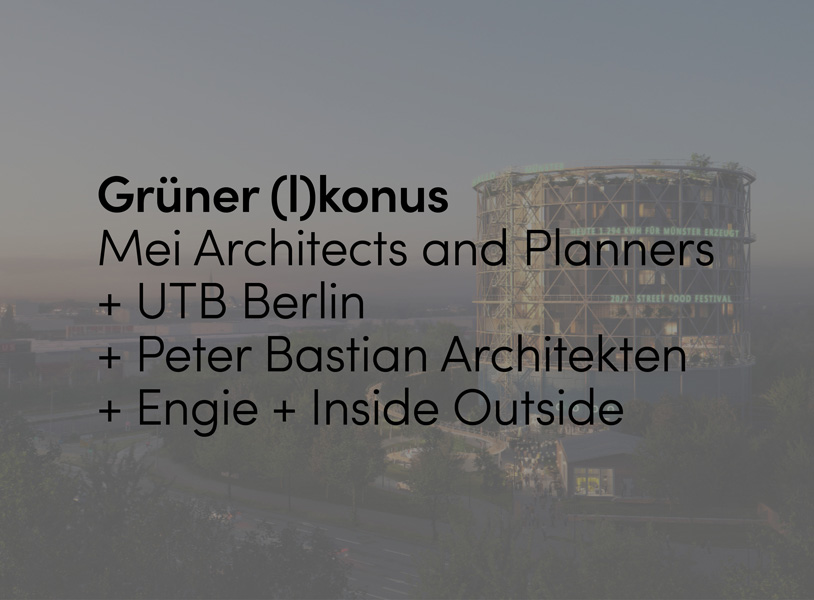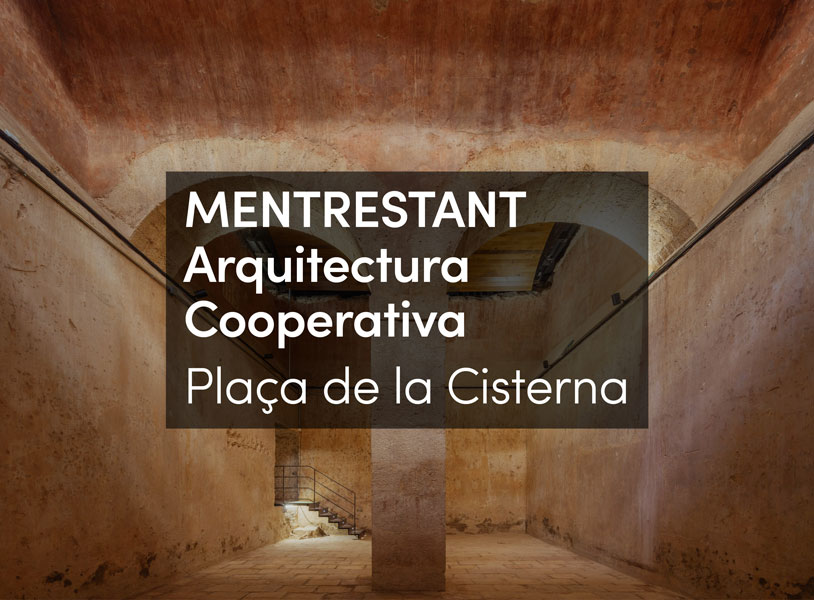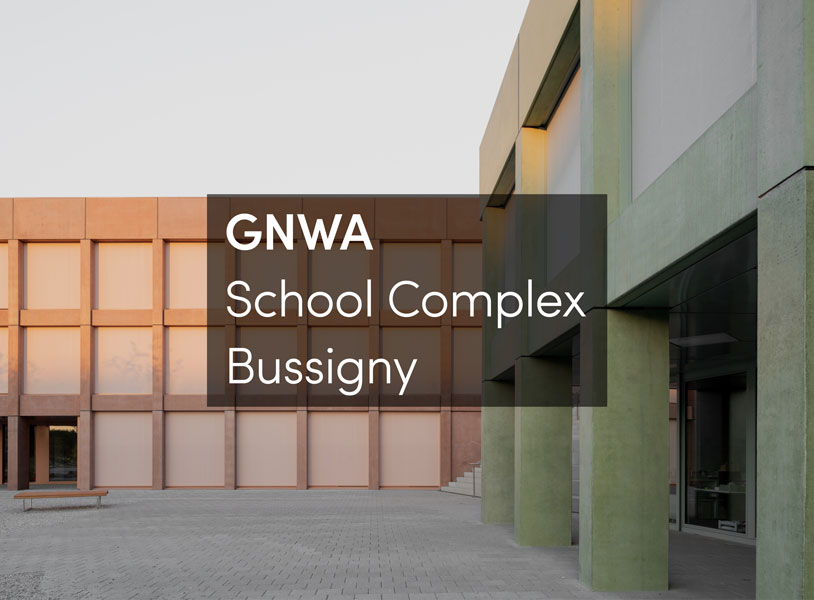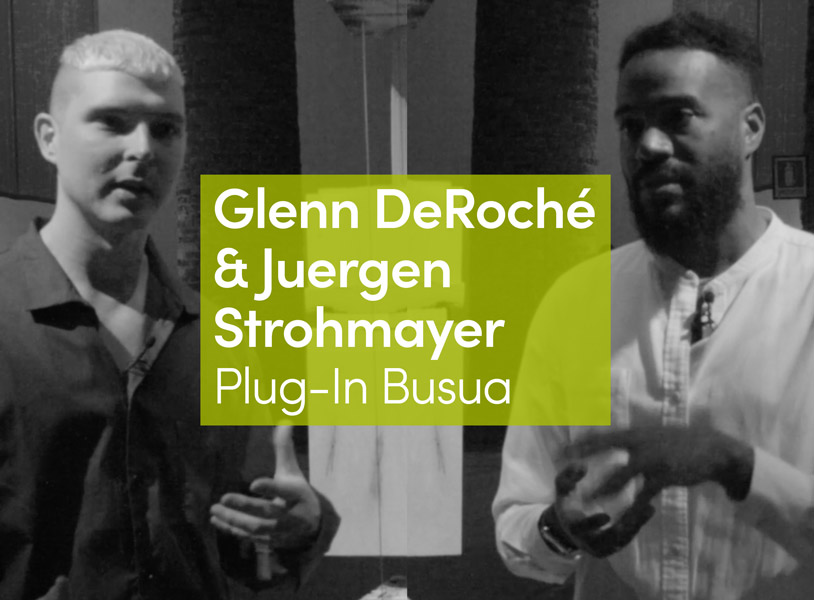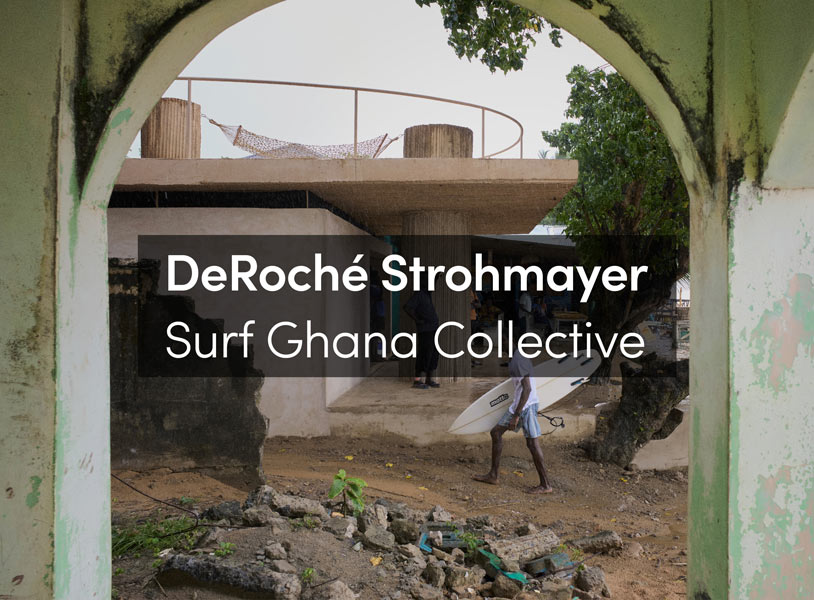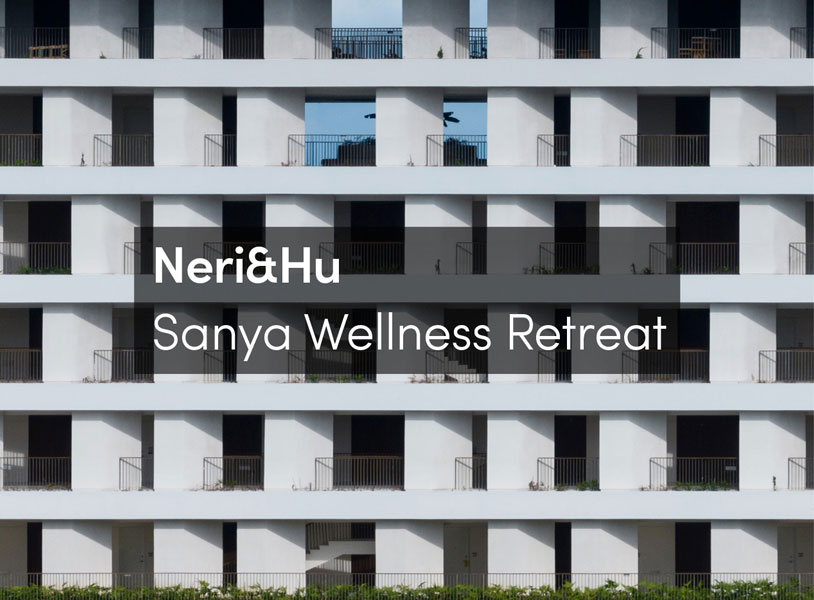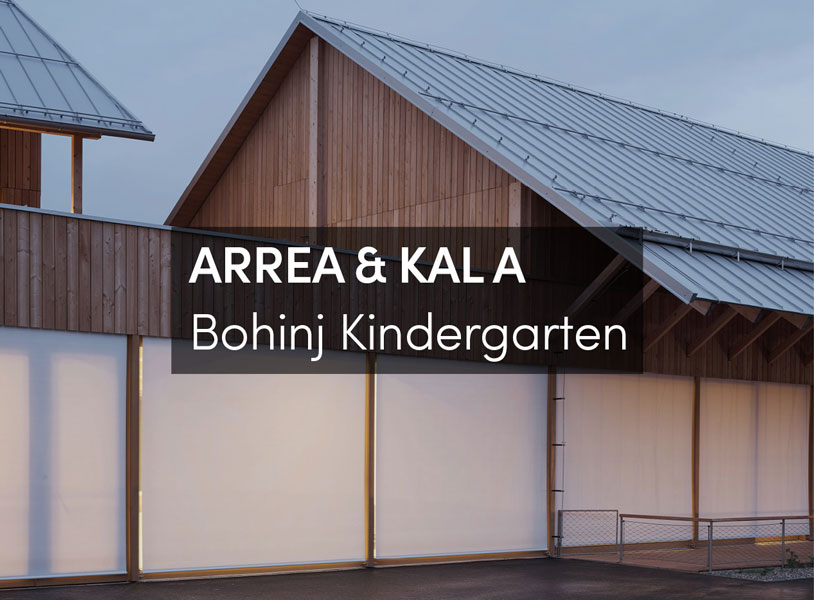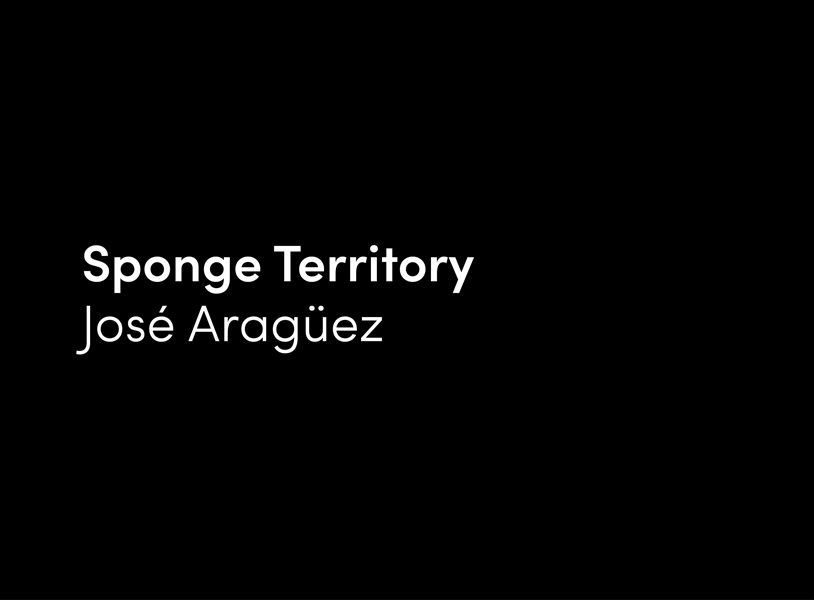The Schoenenkwartier Museum is a new and innovative knowledge center for shoe design, shoe production and shoe fashion in the center of Waalwijk, the Dutch leather and shoe city. It is housed in a listed building complex from the 1930s, by architect Alexander Kropholler, which has been partly renovated, transformed and expanded. The buildings now house a collection of 12,000 objects, several permanent exhibitions, a knowledge center with research library, workshop space and auditorium, museum café and laboratories for design and prototyping. Both the planning and design of the building and its interior map out a new inspiring future for the industry, the city and the community, built on the values of the past.
Historic Craftsmanship as a New Connector
Waalwijk is a typical small European city that grew through the industrial development of a local craft, but now is struggling with its future. Leather processing and shoe manufacturing formed the culture, economy and pride of the region (De Langstraat) as an international player, but leather and shoe production have now disappeared. However, there are still areas occupied by large and small shoe brands, along with the Shoe and Leather Museum, founded in 1954. The building is a combination of a museum and an innovation center, interwoven into a single living entity. A research library is located between the exhibition rooms, and there are several innovation and design labs for education and artists in residence, as well as various possibilities for conferences and company presentations. The Shoe Museum has brought regional shoe craftsmanship back to where it started; the city is once again becoming an (inter)national destination for experts and innovators, and the cultural history of the local community is highlighted and enhanced. The collection is an endless source of inspiration for all this.
Public Revitalization of the City Center
The Shoe Museum is located in the heart of the historic city center, on the Raadhuisplein, where the town hall was housed in the last century. The general functions of the museum, such as the work café with its open work labs, are directly visible from the square and are also open to the public, even for people not visiting the exhibitions. In addition to being a museum and innovation center, the Shoe Museum is a welcoming place for the community. The hospitable public atmosphere is also noticeable when you enter the building through the historic arcades with large pivoting and sliding doors. The entrance area is completely open, and an interior pavement with a cobble pattern runs through the center of the building, reminiscent of a covered city square.
A Real Museum Building that is in Keeping with the Times
The building has a different layout and atmosphere compared to traditional museums. The shoe collection is large, extensive and special, but the intended target groups (from international fashion experts to families from the neighborhood) all have different expectations, needs and attention spans. That is why the building has been designed in such a way that everyone can determine their own path and pace. The completely open ground floor brings together all the functions, from café to exhibitions, and the central garden offers flexibility and choice for the public circulations. The spectacular new large round openings, cut into the stripped-down old façade of the 80s office wing, offer a glimpse of the exhibitions from here. Cleverly placed staircases and paths make it possible to take shortcuts and only visit the highlights. Visitors can study just one exhibition in detail if they wish, but they can also visit the museum in the classical way and follow the entire beautifully thought-out route. The open layout of the museum means that there are many views straight across the space. Visitors can look forward and backward and into the exhibition rooms, the knowledge center and the “make-labs”, which have been placed logically along the routes. This connects the collections and the people in a relaxed way. It makes the Shoe Museum a lively place for cross-pollination and inspiration. There are also occasional views toward the gardens or the historic buildings outside to help visitors’ process their impressions or simply to allow for enjoyment of the beautiful surroundings.
Architecture for Everyone
The tone in the complex is set by familiar materials such as brick, steel, concrete and wood. This is a deliberate choice: the materials reinforce the atmosphere of the collection and of the historical building and form a single collective artwork. At the same time, it prevents some visitors, who may not be accustomed to abstract museum spaces, from feeling uncomfortable or unwelcome. The museum aims to be open to the widest possible audience, and the choice of real materials and geometric shapes transcends the target group in the sense that they appeal to universal experiences of the human senses: from sight to hearing, touch and smell. The materials are also chosen with sustainability in mind. On the one hand, this means that they must be able to withstand rough handling and age well, and on the other hand, they must be sustainably sourced and reused wherever possible.
Adding to the Life Story of the Building
The “Raadhuis ensemble” is one of the most important building complexes by the architect Alexander Kropholler. Originating in the 1930s, it was built in phases and extended once in the 1980s. The buildings have been partly modified, partly renovated and expanded with a new building section. The recognizable Kropholler principles and details were restored during the renovation, and they also inspired the new design. In this way, we applied the principle of individuality and solidity, just as the original architect did: wood is wood; stone is stone. The original layout of the open arcades and the kiosk on the square has been reinforced with new arched window frames made from thick oak, in the “Kropholler” tradition. The new garden has a brick façade, just high enough to make the new museum visible from the town hall square, but low enough not to draw all the attention to itself. As with the historic buildings, large-format bricks with wide joints have been used here; the diagonal, staggered masonry subtly refers to the roof shapes of the other building sections. This means that the addition is not an idiosyncratic fashion icon, but a logical new chapter in the overall story of the historically layered building ensemble, which still has a long future ahead of it.
Free Handling of a Compelling Legacy
Kropholler’s architectural ideas were also somewhat rigid and constraining, which is not in keeping with the role that the museum wishes to fulfil in society today. That is why a conscious decision was made to continue working with the original materials and techniques, but to design in a more liberal way. The new openings in the garden fit well with the arched arcades of the old town hall, but are actually bricked in a complete circle, which would be a “sin” according to Kropholler’s theory. The vaulted ceiling does not maintain one continuously repeating size but is staggered several times. These and other subtly subversive design details bring Kropholler’s rigid architectural ideas into the present day, but ultimately the old and new beliefs form one unit.
Testing Ground for Circular Techniques and Methods
With its various design and manufacturing labs, the Shoe Museum offers space for designers, educational institutions and the business community to experiment with new circular techniques. Experiments have also been carried out with different techniques and materials in the architecture and interior design by turning an oppressive 80s office building with low ceilings into museum spaces, and by sawing out parts of it in a special way and preserving as much as possible. The central multifunctional desk in the entrance area is made of “lime hemp” with ceilings made of synthetic felt from recycled PET bottles. The undisputable eye-catcher in the entrance area is the experimental ceramic tile wall, developed in cooperation with the agency La-Di-Da. The wall combines ceramic craftsmanship with innovation and sustainability through the unusual shape of the 3D printed molds and the use of waste from other glazing processes.
Social Cohesion
To develop the interior design, collaborations have been set up with educational institutions, the business community and creative regional crafts. In cooperation with ceramics studio Cor Unum, the prototype for the tile wall was developed and implemented as a small-scale traditional production, partly realized by people who have been excluded from the labor market. Students from the SaintLucas vocational school designed the leather cushions for the auditorium, and local businesses provided the furnishings for the office environment. This process shows that the link between social cohesion and architectural products can be realized in public buildings. It promotes cultural cohesion, social cohesion and regional identity all at once.


